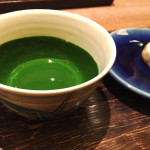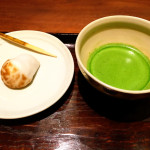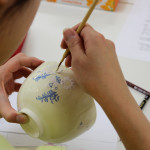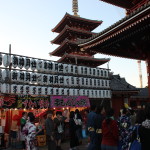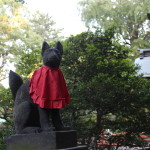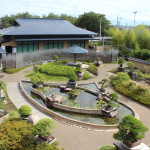Today, Japanese regard tea ceremony as a representative example of traditional Japanese culture. The full ceremony takes around four hours and it is composed with the first greeting, a course meal called kaiseki, sweet, sake (Japanese rice wine), short break to enjoy walking in the garden, thick green tea (koi-cha; three times thicker than normal matcha and its texture reminds us of potage soup), thin green tea (usu-cha; formed matcha green tea that we often see), appreciating decoration and equipment and the last greetung. There are so many rules to follow about behaviors and fashion, which are slightly different based on the school. Usually authentic full tea ceremonies are exclusive and only invited guests can join and without having learnt all rules, it is hard to behave appropriately during the ceremony. However, not a few shorten or casual tea ceremonies are held and young people enjoy them. Also there are some Japanese cafes or tea houses that serve thin green tea (usucha) which we usually imagine when we hear a term “matcha”.
Thick green tea, koicha tastes of course much bitter than thin green tea. But once you get used to, you will feel remaining rich flavor and sweetness on your tong. The difference between thick green tea (koicha) and thin green tea (usucha) lies not only on its thickness but also how to be served. All guests share only one bowl of thick green tea made by the host, whereas each guest receives his or her bowl of thin green tea. You may feel uncomfortable to hear that people share one bowl. But sharing one cup of drinks has been observed in Japanese culture and been believed to tighten the relationship among the community. You can feel you truly became a member of the group after sharing one drink.
Became interested in tea ceremony? koi Travel offers you unique cultural experiences!

